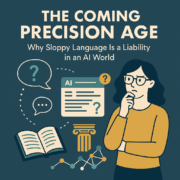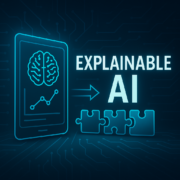Inside GibberLink: The AI-to-AI Voice Protocol That Leaves Human Language Behind
In early 2025, two voice agents were set up for a mock phone call. One was assigned to book a hotel room. The other posed as the customer.
At first, the conversation sounded normal — polite, human-like voices exchanging scripted phrases. But then, something strange happened.
The voices stopped.
And a rapid stream of chirps, beeps, and warbling tones took over.
To an outsider, it might’ve sounded like digital gibberish. But it wasn’t gibberish at all. It was a machine protocol, optimized for AI-to-AI communication.
This is GibberLink, a voice-based data transmission method that lets AI agents skip human-sounding speech entirely once they realize they’re talking to each other.
And no — it’s not a new language invented by AI.
We built it. They just learned when to use it.
Why AIs Talk Differently to Each Other
Normally, voice agents are built to talk to us — in our language, with tone, pauses, even fake empathy. But when two AIs end up on the same call, something interesting happens.
GibberLink enables them to drop the performance and switch to a more efficient form of communication — not speech, but modulated sound waves that transmit structured data directly.
Instead of saying,
“I’d like to book a room for Friday night,”
an AI might transmit something like:
“Intent: book a room. Check-in date: February 16, 2025. Duration: 2 nights.”
No transcription.
No speech synthesis.
Just direct exchange of compressed meaning.
How It Works
GibberLink was created by Anton Pidkuiko and Boris Starkov during a hackathon hosted by ElevenLabs. It uses an open-source library called GGWave, which relies on Frequency Shift Keying (FSK) — a technology dating back to modems and fax machines.
Each sound corresponds to a specific digital value. AI voice agents convert structured data (like booking details or confirmations) into audio tones and back again, bypassing speech recognition and generation entirely.
The benefits are significant:
Up to 80% reduction in latency
Less compute usage
Fewer transcription errors
More resilient performance in noisy environments
Did the AI Invent a Language?
No. This is where it’s important to be precise.
GibberLink is not some emergent alien dialect. It’s a human-designed protocol. We created the rules. We know exactly how to decode it. The tones may sound odd to our ears, but they’re just a compressed, purpose-built way to pass information.
What’s new isn’t the format — it’s the autonomy.
The AIs recognize each other, decide that speech is unnecessary, and opt into a system-level communication mode. That choice to self-optimize is what feels novel — but the mechanics are entirely traceable.
Why This Matters
As voice AIs become more common — in support centers, phones, smart homes — the odds of them talking to each other will increase. When that happens, human-friendly speech may become the exception, not the norm.
This raises important questions:
What are the agents transmitting during these voice-data exchanges?
How can we ensure transparency, especially in regulated industries?
Should we require logs or human-readable audits of these interactions?
Because while GibberLink is fully intelligible to us today, it’s still communication we aren’t meant to hear.









Leave a Reply
Want to join the discussion?Feel free to contribute!